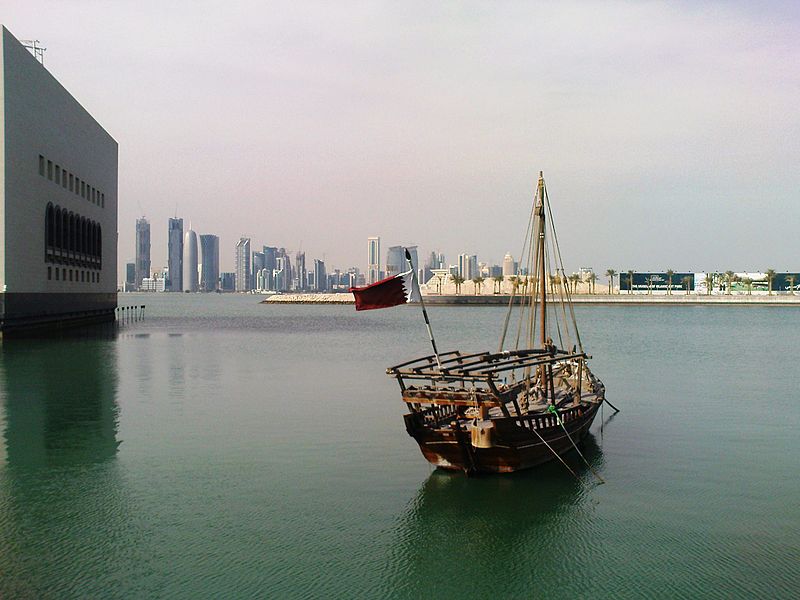Combating climate change in the international community
Can the Rio+20 Summit of 2012 – convened two decades after the Rio Earth Summit of 1992 – assist the international community to combat climate change, and in doing so provide much needed support to the UN climate convention at its Doha, Qatar conference? The answer would have to be yes.

Rio1992 spawned some of the landmark UN environmental treaties on biodiversity and desertification and of course on climate change. Rio+20 was different, and not a moment in history for more big treaty making. Instead it was far more about how a community of nations can actually implement what has already been agreed. As such it has provided perhaps fresh pathways towards realising a sustainable century, while also recalibrating wealth as not just ‘cash and burn’ but also linked to a healthy, productive environment and fostering positive social improvements, including decent jobs. As a result of Rio+20, countries have now begun a process designed to lead to a suite of Sustainable Development Goals (SDGs) to complement the poverty-related Millennium Development Goals by 2015.
The SDGs underline that issues such as climate change, loss of the natural world, deforestation and pollution are everyone’s challengeand are unlikely to be resolved unless developed countries rapidly decouple growth from over-consumption of natural resources – fossil fuels included.
The precise set of goals have yet to be decided but many may echo the challenge of climate and wider sustainability issues, sometimes in ways that seem unconnected at first glance. The European Commission, for example, is suggesting goals on food waste and food loss – one way of boosting food security and reducing hunger in a world where by some estimates more than 30 per cent of produce never makes it from farm to fork.
But there is a climate contribution here too – every apple or sheaf of wheat lost or wasted represents a waste of fossil fuels used in, say, farm machinery, or electricity in storage facilities and supermarkets. Meanwhile, curbing these losses could also take some pressure off forests and soils and land – the deforestation and degradation of which are key sources of greenhouse gas emissions.
Rio+20 also gave the go-ahead to an inclusive Green Economy in the context of sustainable development and poverty eradication. Analysis under UNEP’s Green Economy initiative indicates that investing about 1.25 per cent of global GDP each year in energy efficiency and renewable energies could cut global primary energy demand by 9 per cent in 2020, and by close to 40 per cent by 2050.
Employment levels in the energy sector would be one-fifth higher than under a business as usual scenario as renewable energies take close to 30 per cent of the share of primary global energy demand by mid-century. Savings on capital and fuel costs in power generation would, under a Green Economy scenario, be on average US$760 billion a year between 2010 and 2050.
This transition is under way – the latest figures from a UNEP–Bloomberg–New Energy Finance study shows that investment in new renewables stood at over US$265 billion in 2011, higher than investment in new fossil fuels.
The decision by Heads of State in Rio to give the go-ahead for a 10 Year Framework of Programmes for Sustainable Consumption and Production also supports such transformations including in respect to energy and transport – again a 10 year programme and a potentially useful ally in combating climate change.
As part of the Rio+20 outcome, governments in collaboration with the UN and others are exploring a new indicator of wealth beyond GDP, which isa crude measure of progress as it fails to take into account environmental and social impacts including climate change.
Meanwhile several countries including Brazil, Denmark, France and South Africa, in collaboration with UNEP and the Global Reporting Initiative, are taking forward corporate sustainability reporting. Around one-quarter of the companies tracked by finance houses report their environmental, social and governance footprints including greenhouse gas emissions – but 75 per cent do not. It is thus difficult for pension funds and other investors to know whether or not to invest in these companies and essentially reward those meeting high standards. The new initiative, supported by insurers and organisations such as the Carbon Disclosure Project, aims to change the ground rules by making it an opt-out rather than an opt-in scheme – in other words companies who do not wish to report will have to explain to regulators why not. This could profoundly change the carbon profile of companies across the globe.
And there are other initiatives also emerging that can assist in combating climate change while also delivering multiple Green Economy benefits.
After over a decade of scientific assessment and analysis into so-called short-lived climate pollutants, a new initiative called the Climate and Clean Air Coalition (CCAC) was launched in early 2012. The aim of this voluntary partnership focuses on black carbon – known to you and me as soot – produced by ships and oil and gas flaring as well as millions of other point sources across the planet. These include inefficient brick kilns, cooking stoves, diesel engines and the burning of agricultural wastes;the practice of swaling in Russia is considered to be a significant source of soot in the Arctic.
When in the atmosphere, black carbon can absorb heat and thus aggravate climate change, linked with the build-up of carbon dioxide and other greenhouse gases. Falling onto ice, black carbon can reduce its ability to reflect heat back into space, accelerating melting.
Other SLCPs include methane emitted from rotting organic material in landfills, oil and gas infrastructure and agriculture; low level or so called tropospheric ozone and a range of substances called hydroflurocarbons (HFCs) being now increasingly used as replacement refrigerants. While HFCs have zero impact on the ozone layer that protects the earth from dangerous levels of ultra-violet rays, many are powerful greenhouse gases.
Overall it is estimated that fast action on short-lived pollutants could have a direct impact on climate change, with the potential to reduce the warming expected by 2050 by up to 0.5 degrees C. At the same time, by 2030, such action can prevent millions of premature deaths linked with, for example, breathing in soot, while avoiding the annual loss of more than 30 million tonnes of crops.
The CCAC, whose secretariat is hosted by UNEP, was launched earlier in 2012 as a way of catalysing worldwide action on SLCPs. Today its membership stands at close to 30 governments and non-state bodies including Bangladesh, Canada, France, Germany, Ghana, Mexico, the United States, the International Cryosphere Climate Initiative, International Council on Clean Transportation and the Stockholm Environment Institute.
Mexico, for example, has recently launched an initiative with the CCAC to modernise traditional brick kilns in the developing world. The types and quantities of kilns and the fuels used vary within regions and even within countries. For instance, there are approximately 100,000 large operating units in India, around 20,000 artisanal brick kilns in Mexico, while most of the 6,000 units in Bangladesh are the circa 1900s large-scale kilns with fixed chimneys. Recent studies show that implementing more efficient technologies, mainly during the firing of bricks, can result in reductions in pollutant emissions of between 10 and 50 per cent, depending on the process, scale and fuel used.
Waste generated worldwide is responsible for an estimated one-third of global methane emissions– a greenhouse gas over 20 times more potent than carbon dioxide and one linked to the generation of ground level ozone that is not only damaging to crops but human health. The CCAC is working with the Global Methane Initiative and the C40 Cities Climate Leadership Group, which is partnered with the Clinton Climate Initiative, to assist urban areas to cut methane emission from across the waste chain including from landfills and pollution linked with organic waste like food.
Some countries, including several Small Island Developing States and Least Developed Countries, have become concerned that focusing on SLCPs might defocus efforts under the UN Framework Convention on Climate Change (UNFCCC) and the urgency to agree on a new international treaty by 2015 to come into force by 2020. The CCAC is clear that its partnership must complement and support the aims under the legally-binding UN process which needs to move forward with real urgency in Qatar – no amount of cuts in black carbon for example can spare the planet and its people from dangerous levels of climate change over the 21st century unless big reductions are made in the primary greenhouse gas, carbon dioxide.
But given the cost effective benefits of acting on SLCPs – many of the actions needed would eventually save money by for example harvesting methane as a fuel rather than venting it as a pollutant – the range of health, food and climate benefits and the fact that no new technologies are required, it would seem prudent to take this opportunity.



_-_frame_at_0m5s_400_250_80_s_c1.jpg)



